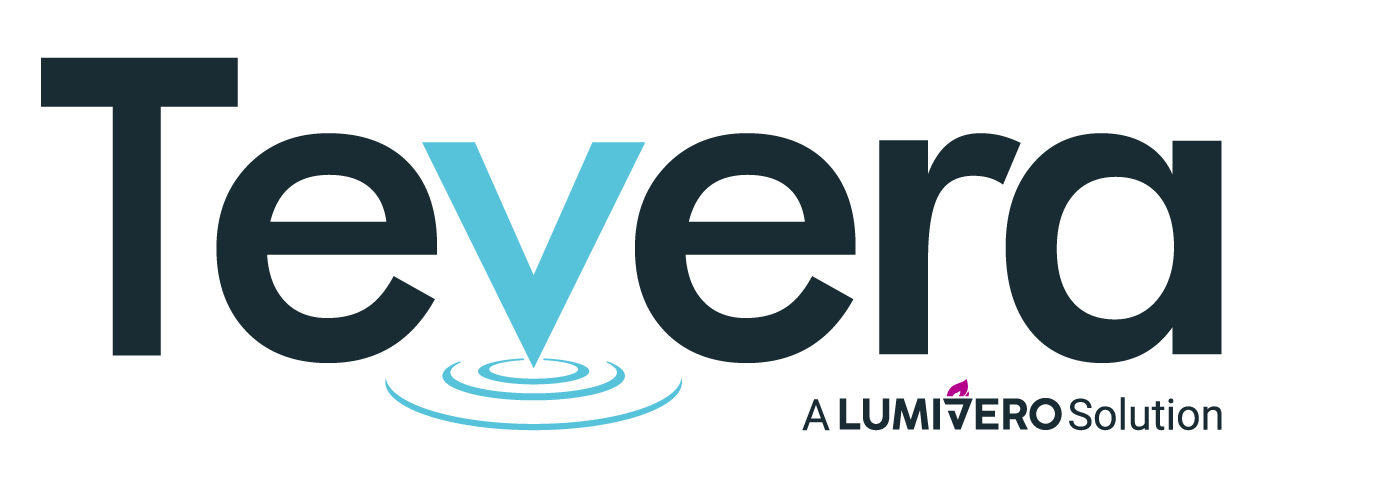A Practical Guide for Programs Considering Adding or Expanding Online and Blended Classes
Introduction
This practical guide is for program administrators and field directors for social work and counselor education programs who are looking to identify, evaluate, and implement new software tools to help streamline field education and assessment management, and simplify time tracking and student-supervisor communications.
Acknowledgement
Material adapted from: Samuels, K., Hitchcock, L. I., & Sage, M. (2020). Selection of Field Education Management Software in Social Work. Field Educator, 10.1(Spring).
About Tevera
As the need for social workers, counselors, and therapists grows, Tevera is helping academic programs meet the demand by simplifying field education and streamlining assessment management. Based in Hudson, WI, Tevera’s software platform helps programs prepare students for successful careers in the increasingly digital field of healthcare, giving students the tools they need to graduate, achieve licensure, and secure employment.
What’s Going On in the World of Online Higher Education?
Undergraduate and graduate programs have been adding digital tools to their classrooms for years. Over the last decade or so, online enrollment has increased by 400%.
When COVID-19 shuttered schools in March, 2020 every classroom went online overnight, regardless if they were ready or not.
While no one is certain when schools will reopen their physical doors, programs need to look to the post-COVID 19 future. How will this global online learning experiment impact higher education? Will everyone love learning online? Will professors and students find innovative ways to overcome the struggles that have been plaguing online learning? Or will everyone be so tired of learning on a screen that face-to-face classes will see an increase in popularity?
Of course, only time will tell for sure but some of the experts are saying to expect a “permanent shift to online education.”
Takeaway
Every program needs to build digital flexibility into their plans. Hopefully we won’t experience another global shutdown any time soon but people are only getting busier, making solutions that free them up more appealing. Plus, as we all get more comfortable with and more dependent on technology, our collective expectations rise accordingly. The programs that can build learning experiences that students can fit into their lives will continue to grow. Even classes that are fully face-to-face can employ digital tools that can facilitate communication and enhance their students’ progress.
Common Problems Faced by Distance Learning Programs
Even prior to COVID-19, higher education programs everywhere have faced significant headwinds. The high school graduation rate is declining, shrinking the pool of eligible higher education applicants. Combine this with the student debt crisis and it’s no wonder that programs are seeking creative ways to attract and retain students.
For the most part, online and face-to-face programs have been relatively separated in the minds of students and they typically know which one they want. But as distance education programs become increasingly sophisticated and students themselves become busier and more budget-conscious, this divide no longer exists. COVID-19 is only accelerating this trend, albeit with a sense of urgency not seen before.
This has meant that traditional face-to-face programs are also turning to blended learning formats and even launching their own online programs. Programs of all formats, face similar challenges:
-
- attracting and retaining students,
- establishing and maintaining credibility,
- finding, approving, and adopting new tools,
- improving data analysis, and
- managing budgets.
In this guide, we’ll explore how programs can overcome these obstacles, tools that can help them streamline operations, and important considerations to keep in mind to keep your program sustainably growing for the future.
Takeaway
Embracing digital tools and flexible class formats is now imperative.
Attracting and Retaining Students
To understand how to attract and retain students, programs need to really understand where their students are coming from.
What are their goals?
People pursue degrees to find a job. Maybe they’re looking for something that pays better or maybe they’re switching careers. Higher education is now a prerequisite for most careers but that doesn’t mean getting a boost in pay is someone’s only goal, just a very important one.
For behavioral health programs like counselor education and social work, students have three primary goals:
-
- To help people
- To find employment
- To find a career they love
What do your future students look like?
It’s not enough to know what your students want from your program, you also have to deeply understand who they are and where they’re coming from. Here are some stats on student debt and demographics to get you started.
Students are busy!
According to the Lumina Foundation:
-
- 75% of college students are commuting, parenting, and working while going to school
- 40% of students are part-time students
- 38% of students are older than 25 years old
- 25% of students have dependents
- On average, students work 19 hours per week on top of going to school
The right software can help students save time by simplifying time-tracking, communication, assignments, and feedback. Tevera even helps them save time while looking for a job because they’ll be able to reference every report, every assignment, and every achievement they did while in school.
Students have a lot of DEBT, even if they’re working while studying.
-
- According to the New York Fed from 2004 to 2019, student debt increased 480%.
- The average student will spend $99,417 to earn their degree.
The more outside stressors, like finances, a student has, the more likely it is that they’ll drop out. Even with flexible class formats and part-time options, programs need to understand what their students experience outside of the classroom to help them succeed academically.
Adding new software can raise the question of who will pay? Is it a new student fee? Will student loans cover it? Whenever there is a new cost added, be sure that you’re considering the long-term return on investment as well as the short-term price tag.
If you’re going partially or fully online, what does that mean for your students?
Everyone learns differently. A New York Times article highlights how online courses can help or hurt students if they’re doing their work solely online or have at least some face-to-face time. Students who have strong self-motivation and organizational skills tend to perform better, even without an instructor present.
Undergraduate programs will have different students than post-graduate programs but both should be aware of where their students are coming from and build support systems to help those that may struggle with an online model. Blended classes are a great way to bridge the gap between online and face-to-face classes. However, fully online classes can still add that personal relationship between pupil and instructor by adding video check-ins, weekly updates, and other methods of communication.
Establishing and Maintaining Credibility
Anything new is scary. For something as precious as education, the stakes only get higher. Fortunately, online education is becoming more widely accepted but programs still need to be aware that prospective students may be wary of spending their tuition dollars for online learning.
For schools, this poses a new challenge. No longer are your competitors other brick and mortar colleges. Now, you’re competing against YouTube and online learning platforms. But higher education has one, giant ace-in-the-hole: credibility
To stay competitive, you need to maintain credibility and establish it for your online offerings. There are three primary ways to do this:
Accreditation
Accreditation is the strongest signal to prospective students that a program is credible. Having CSWE/CACREP/COAMFTE accreditation shows that you can prepare them for their future career and that their tuition dollars will be well spent.
Unfortunately, earning and maintaining accreditation can be a huge headache for program administrators. The amount of paperwork, meetings, and data needed can feel overwhelming and like you’re juggling a million different things.
Takeaway
Investing in accreditation will pay off. Software programs can help simplify the process and Tevera, specifically, can help with streamlining CSWE/CACREP/COAMFTE accreditation.
Gainful Employment
Your students want a career where they can make a difference. If they didn’t, they wouldn’t have enrolled in the first place. But to be able to make a difference in their future career, your students NEED to be able to land their first job and they need to be able to realize a return on their investment: their tuition dollars.
We know we’re preaching to the choir here but it’s so important that we want to highlight it. You absolutely must gather data about your student’s careers after graduation. We know it can be difficult to do this but it is worth every minute and dollar you invest into it.
Takeaway
We allow students to keep a record of their accomplishments during school so they have lifelong access to important information as they seek employment after graduation.
Transparency
Be honest. Share what your program is up to, success and what you’ve learned from your failures. We’re not saying you need to share every blunder but if you do make one, own up to it. PR nightmares can escalate quickly. Nip them in the bud whenever possible.
On the more positive side, be transparent about what your students are up to. Share their wins. Show your fans and followers what your alumni is up to. Ask them to contribute to your blog (this will help them establish credibility in their field too). Embrace the personality of your school and think like a marketer to continue attracting students.
Takeaway
Finding the right software partner can make transparency easier with easy access to data and reporting.
Embracing Data
Let’s talk about data. Going online means you’ll have more access to more data than ever before. But to make that data work for you, you need to have a way to capture it.
A recent report, 2019 Higher Education Trends, acknowledged that most schools are investing in data analytics… “However, nearly one fourth of institutions are not collecting usable business and systems-level data and few institutions are systematically collecting, integrating, and using their data.”
Takeaway
Choose software programs that make reporting easy. It will provide you with more “bang for your buck” and save you some headaches.
Finding the Right Software for Your Program
Before Your Search
Before you start looking at the different software tools out there, follow these 3 steps to help you narrow your search and prioritize what you need to have, versus what would be nice to have.
Step 1: Identify Your Need
Do you need a way for students to track clinical hours? Maybe you’re looking for something that will help simplify maintaining accreditation. List everything you want, then sort your list into “need to have” and “nice to have.” It will help speed up your decision-making process.
Step 2: List Your Non-Negotiables
You have to know your deal-breakers. If a tool doesn’t integrate with your existing systems, that’s a deal breaker. If it isn’t secure or doesn’t meet your compliance requirements or accessibility standards, it’s a deal-breaker.
Step 3: Consider Future Needs (and Wants)
Just because you have a single need right now doesn’t mean that other needs won’t arise. Make a quick list of what your program will need in the future. Don’t spend too much time on this step but make sure you have at least a vague picture of what your program may need in the coming months and years. If you can find a software program that meets your immediate and future needs, it’s worth an extra look.
Starting Your Search
Search engines are great and you should utilize them to identify possible candidates. But even better? Talk to similar programs and see what they’re using and if they like it. Personal recommendations can help you save time during your search.
Right Before Evaluation
You’ve talked to other professionals in your field, scoured the internet, and gotten the inside scoop from program administrators. Now’s the time to choose. Read our next section on how to evaluate what software will be right for you and your program.
How to Evaluate Which Software is Right for Your Program
Every program is different and you’ll have your own set of criteria to evaluate software programs against. However, there are similarities that every program will have so we put together a starter checklist for you:
Features and Capabilities
-
- Does it solve your immediate need?
- What other features does it offer that you could benefit from?
- What integrations does it offer?
- What are its data and analytics capabilities?
- Does it have reporting capabilities?
User Experience – Accessibilty
-
- Does it adhere to digital accessibility standards?
Security and Compliance
-
- Does it adhere to your school’s security requirements?
- Is it compliant with your data privacy and protection standards?
Customer Service
-
- Is the company responsive?
- What level of customer service can you expect?
- What do other customers say about working with them?
Time to Launch
-
- How long (and thorough) is the onboarding process?
- When can you start using it?
Budget
-
- How might these features help you reduce costs?
- What’s the cost, upfront and ongoing?
Credits
Samuels, K., Hitchcock, L. I., & Sage, M. (2020). Selection of Field Education Management Software in Social Work. Field Educator, 10.1(Spring). https:
Takeaway
The price of software, while certainly important, should be the last “checkbox” on your list. The reason is simple: you want to find a tool that fits your needs. If you eliminate solely on price, you risk missing out on a comprehensive offering that has important features that you didn’t realize initially. Or the software may have hidden costs in support, add on fees, downtime, etc. that become apparent after it’s too late.
Replacing an inferior solution is much more costly and difficult than making sure that your team has thoroughly vetted all options.
Checklist for Taking Your Program Online
If you haven’t already, it’s time to do some strategy work about the future of your program and how adding software systems may impact it. No one knows your program better than you, your students, and the faculty members. Send surveys and do focus groups with key stakeholders and ask these questions:
-
- What’s the long-term vision for your program? Even if you’re mostly a face-to-face program, COVID-19 showed us all the need for digital flexibility. Do you have easy-to-adapt contingency plans in place?
- Are your current students the same students who will be interested in more online offerings?
- Will you be expanding your student base? If so, how will you reach them and how can you highlight your new online programs as a way to attract them?
- What are your program’s differentiators? Will these continue to apply (and be strong) if your course formats change?
If you’ve chosen the software tool you want, now it’s time to get it approved. What do you do?
-
- Gather the information you need: your budget, key decision-makers, and proof points.
- Build your case: how will this save people time (and therefore money)? How will this tool enhance your students’ experience?
- Get buy-in: approach people who will benefit. Get quotes and support that will help prove the need for the tool and the value people see in it.
- Make your case: go through your school’s new software or new textbook approval process.
- Launch the technology: the first semester where the technology is used is crucial. Iron out bumps and keep analyzing.
Evaluating the Success of Your Online Program
We hate to be the ones to tell you this but if you’re relying solely on end-of-the-course surveys to understand if your program is helping students, you’re missing out. Here are a few ways your program can continuously monitor the success of your program:
-
-
End-of-Course Surveys
-
We didn’t say they’re bad! They’re great and should be done at the end of every class to get a feel for what students liked, didn’t like, and whether they learned what they were supposed to. We’re just saying you need to do more than just this.
-
-
Mid-Course Check-Ins
-
It can be hard for students to remember everything that happened during a class and put all of that into useful feedback in one survey. Implementing mid-course check-ins can help programs capture real-time feedback and course correct, if needed.
-
-
Grades
-
We know that grades are not the end-all-be-all of monitoring student performance. That said, grade TRENDS are hugely telling. After switching to a blended or fully online format, did grades plummet or skyrocket? Be sure to note any changes in grading policies and to evaluate on a regular basis if a change is needed.
-
-
Tracking Progress Against Student Learning Outcomes
-
Most courses have student learning outcomes (SLOs) built in. If a student meets them, great! If not… well, something will need to be adjusted. Writing clear SLOs and being able to accurately track students’ progress will help your program better analyze what is and isn’t working when and after you make a change to the course format.
-
-
Enrollment Rates
-
After your online course or program has been running for a while, check out the enrollment rates. If you have multiple class formats, which are attracting more students? Are there seasonal trends that may impact the type of class students want to take? What other trends can you discern? For instance, a spike in enrollment for an online class may indicate that students are excited about the new format. But if it’s followed by a sharp drop, maybe that class didn’t meet their expectations. Constantly re-evaluate and don’t be afraid to make changes until you find the winning combination.
-
-
Attendance
-
Online attendance doesn’t look the same as face-to-face. However, there are usually still virtual meetings and assignments due. Be sure to monitor if students are showing up and turning things in on time. If they’re not, it’s likely a sign that something isn’t clear in the expectations or that they’re disengaging from the program.
-
-
Gainful Employment Rates
-
Perhaps most tellingly, look at your gainful employment rates. Is there a difference between face-to-face students and online students? This one takes a while to get enough data to provide valuable information but it’s a key one. Survey past students and see what they felt best prepared them for their current job and double down on that.
Takeaway
Software programs like Tevera house data points like those listed above to make reporting and forecasting easier for program administrators and other program decision makers.
Building for the Future
Technology moves fast. Fortunately, if you have the right software partners, they’ll keep up with the trends for you. Here are a few ways you can leverage that partner and your online course to keep building on your program’s momentum.
-
- Make sure your IT department is regularly updating your systems.
- Survey your online students to gather marketing-friendly quotes and photos.
- Share what you’re learning through the process and help other schools and students succeed (this will help your marketing team too!).
- Don’t stop gathering and analyzing data.
- Think of new ways digital tools can help. Suggest these ideas to your software providers. (Tevera listens to our customers and we build new features based on feedback!)
Conclusion
There is no perfect recipe for any course or program format. The programs that will grow and thrive will be the ones who are adaptable and continue to meet the needs of their students, especially as they change. Demonstrating the value your program provides is one of the best ways to attract and retain students. Being flexible with class formats will continue to grow in importance.
And having the right software tools to help your students succeed and your program grow is crucial.
Takeaway
Tevera is a software solution designed to help programs simplify the complexity of tracking student progress, managing field placement, and supporting accreditation requirements. For online programs, managing these challenges is even more important:
-
- Helping students track their clinical hours,
- Streamlining and monitoring student learning outcomes,
- Facilitating communication between students, faculty, and site supervisors or field instructors,
- Simplifying reporting and assessment management.
- Making earning and maintaining accreditation much easier.
To learn more, scheduled a product overview for your team.
SOLUTIONS
RELATED POSTS
PRODUCT OVERVIEW
See how Tevera can elevate your program.
A Practical Guide for Programs Considering Adding or Expanding Online and Blended Classes
Introduction
This practical guide is for program administrators and field directors for social work and counselor education programs who are looking to identify, evaluate, and implement new software tools to help streamline field education and assessment management, and simplify time tracking and student-supervisor communications.
Acknowledgement
Material adapted from: Samuels, K., Hitchcock, L. I., & Sage, M. (2020). Selection of Field Education Management Software in Social Work. Field Educator, 10.1(Spring).
About Tevera
As the need for social workers, counselors, and therapists grows, Tevera is helping academic programs meet the demand by simplifying field education and streamlining assessment management. Based in Hudson, WI, Tevera’s software platform helps programs prepare students for successful careers in the increasingly digital field of healthcare, giving students the tools they need to graduate, achieve licensure, and secure employment.
What’s Going On in the World of Online Higher Education?
Undergraduate and graduate programs have been adding digital tools to their classrooms for years. Over the last decade or so, online enrollment has increased by 400%.
When COVID-19 shuttered schools in March, 2020 every classroom went online overnight, regardless if they were ready or not.
While no one is certain when schools will reopen their physical doors, programs need to look to the post-COVID 19 future. How will this global online learning experiment impact higher education? Will everyone love learning online? Will professors and students find innovative ways to overcome the struggles that have been plaguing online learning? Or will everyone be so tired of learning on a screen that face-to-face classes will see an increase in popularity?
Of course, only time will tell for sure but some of the experts are saying to expect a “permanent shift to online education.”
Takeaway
Every program needs to build digital flexibility into their plans. Hopefully we won’t experience another global shutdown any time soon but people are only getting busier, making solutions that free them up more appealing. Plus, as we all get more comfortable with and more dependent on technology, our collective expectations rise accordingly. The programs that can build learning experiences that students can fit into their lives will continue to grow. Even classes that are fully face-to-face can employ digital tools that can facilitate communication and enhance their students’ progress.
Common Problems Faced by Distance Learning Programs
Even prior to COVID-19, higher education programs everywhere have faced significant headwinds. The high school graduation rate is declining, shrinking the pool of eligible higher education applicants. Combine this with the student debt crisis and it’s no wonder that programs are seeking creative ways to attract and retain students.
For the most part, online and face-to-face programs have been relatively separated in the minds of students and they typically know which one they want. But as distance education programs become increasingly sophisticated and students themselves become busier and more budget-conscious, this divide no longer exists. COVID-19 is only accelerating this trend, albeit with a sense of urgency not seen before.
This has meant that traditional face-to-face programs are also turning to blended learning formats and even launching their own online programs. Programs of all formats, face similar challenges:
-
- attracting and retaining students,
- establishing and maintaining credibility,
- finding, approving, and adopting new tools,
- improving data analysis, and
- managing budgets.
In this guide, we’ll explore how programs can overcome these obstacles, tools that can help them streamline operations, and important considerations to keep in mind to keep your program sustainably growing for the future.
Takeaway
Embracing digital tools and flexible class formats is now imperative.
Attracting and Retaining Students
To understand how to attract and retain students, programs need to really understand where their students are coming from.
What are their goals?
People pursue degrees to find a job. Maybe they’re looking for something that pays better or maybe they’re switching careers. Higher education is now a prerequisite for most careers but that doesn’t mean getting a boost in pay is someone’s only goal, just a very important one.
For behavioral health programs like counselor education and social work, students have three primary goals:
-
- To help people
- To find employment
- To find a career they love
What do your future students look like?
It’s not enough to know what your students want from your program, you also have to deeply understand who they are and where they’re coming from. Here are some stats on student debt and demographics to get you started.
Students are busy!
According to the Lumina Foundation:
-
- 75% of college students are commuting, parenting, and working while going to school
- 40% of students are part-time students
- 38% of students are older than 25 years old
- 25% of students have dependents
- On average, students work 19 hours per week on top of going to school
The right software can help students save time by simplifying time-tracking, communication, assignments, and feedback. Tevera even helps them save time while looking for a job because they’ll be able to reference every report, every assignment, and every achievement they did while in school.
Students have a lot of DEBT, even if they’re working while studying.
-
- According to the New York Fed from 2004 to 2019, student debt increased 480%.
- The average student will spend $99,417 to earn their degree.
The more outside stressors, like finances, a student has, the more likely it is that they’ll drop out. Even with flexible class formats and part-time options, programs need to understand what their students experience outside of the classroom to help them succeed academically.
Adding new software can raise the question of who will pay? Is it a new student fee? Will student loans cover it? Whenever there is a new cost added, be sure that you’re considering the long-term return on investment as well as the short-term price tag.
If you’re going partially or fully online, what does that mean for your students?
Everyone learns differently. A New York Times article highlights how online courses can help or hurt students if they’re doing their work solely online or have at least some face-to-face time. Students who have strong self-motivation and organizational skills tend to perform better, even without an instructor present.
Undergraduate programs will have different students than post-graduate programs but both should be aware of where their students are coming from and build support systems to help those that may struggle with an online model. Blended classes are a great way to bridge the gap between online and face-to-face classes. However, fully online classes can still add that personal relationship between pupil and instructor by adding video check-ins, weekly updates, and other methods of communication.
Establishing and Maintaining Credibility
Anything new is scary. For something as precious as education, the stakes only get higher. Fortunately, online education is becoming more widely accepted but programs still need to be aware that prospective students may be wary of spending their tuition dollars for online learning.
For schools, this poses a new challenge. No longer are your competitors other brick and mortar colleges. Now, you’re competing against YouTube and online learning platforms. But higher education has one, giant ace-in-the-hole: credibility
To stay competitive, you need to maintain credibility and establish it for your online offerings. There are three primary ways to do this:
Accreditation
Accreditation is the strongest signal to prospective students that a program is credible. Having CSWE/CACREP/COAMFTE accreditation shows that you can prepare them for their future career and that their tuition dollars will be well spent.
Unfortunately, earning and maintaining accreditation can be a huge headache for program administrators. The amount of paperwork, meetings, and data needed can feel overwhelming and like you’re juggling a million different things.
Takeaway
Investing in accreditation will pay off. Software programs can help simplify the process and Tevera, specifically, can help with streamlining CSWE/CACREP/COAMFTE accreditation.
Gainful Employment
Your students want a career where they can make a difference. If they didn’t, they wouldn’t have enrolled in the first place. But to be able to make a difference in their future career, your students NEED to be able to land their first job and they need to be able to realize a return on their investment: their tuition dollars.
We know we’re preaching to the choir here but it’s so important that we want to highlight it. You absolutely must gather data about your student’s careers after graduation. We know it can be difficult to do this but it is worth every minute and dollar you invest into it.
Takeaway
We allow students to keep a record of their accomplishments during school so they have lifelong access to important information as they seek employment after graduation.
Transparency
Be honest. Share what your program is up to, success and what you’ve learned from your failures. We’re not saying you need to share every blunder but if you do make one, own up to it. PR nightmares can escalate quickly. Nip them in the bud whenever possible.
On the more positive side, be transparent about what your students are up to. Share their wins. Show your fans and followers what your alumni is up to. Ask them to contribute to your blog (this will help them establish credibility in their field too). Embrace the personality of your school and think like a marketer to continue attracting students.
Takeaway
Finding the right software partner can make transparency easier with easy access to data and reporting.
Embracing Data
Let’s talk about data. Going online means you’ll have more access to more data than ever before. But to make that data work for you, you need to have a way to capture it.
A recent report, 2019 Higher Education Trends, acknowledged that most schools are investing in data analytics… “However, nearly one fourth of institutions are not collecting usable business and systems-level data and few institutions are systematically collecting, integrating, and using their data.”
Takeaway
Choose software programs that make reporting easy. It will provide you with more “bang for your buck” and save you some headaches.
Finding the Right Software for Your Program
Before Your Search
Before you start looking at the different software tools out there, follow these 3 steps to help you narrow your search and prioritize what you need to have, versus what would be nice to have.
Step 1: Identify Your Need
Do you need a way for students to track clinical hours? Maybe you’re looking for something that will help simplify maintaining accreditation. List everything you want, then sort your list into “need to have” and “nice to have.” It will help speed up your decision-making process.
Step 2: List Your Non-Negotiables
You have to know your deal-breakers. If a tool doesn’t integrate with your existing systems, that’s a deal breaker. If it isn’t secure or doesn’t meet your compliance requirements or accessibility standards, it’s a deal-breaker.
Step 3: Consider Future Needs (and Wants)
Just because you have a single need right now doesn’t mean that other needs won’t arise. Make a quick list of what your program will need in the future. Don’t spend too much time on this step but make sure you have at least a vague picture of what your program may need in the coming months and years. If you can find a software program that meets your immediate and future needs, it’s worth an extra look.
Starting Your Search
Search engines are great and you should utilize them to identify possible candidates. But even better? Talk to similar programs and see what they’re using and if they like it. Personal recommendations can help you save time during your search.
Right Before Evaluation
You’ve talked to other professionals in your field, scoured the internet, and gotten the inside scoop from program administrators. Now’s the time to choose. Read our next section on how to evaluate what software will be right for you and your program.
How to Evaluate Which Software is Right for Your Program
Every program is different and you’ll have your own set of criteria to evaluate software programs against. However, there are similarities that every program will have so we put together a starter checklist for you:
Features and Capabilities
-
- Does it solve your immediate need?
- What other features does it offer that you could benefit from?
- What integrations does it offer?
- What are its data and analytics capabilities?
- Does it have reporting capabilities?
User Experience – Accessibilty
-
- Does it adhere to digital accessibility standards?
Security and Compliance
-
- Does it adhere to your school’s security requirements?
- Is it compliant with your data privacy and protection standards?
Customer Service
-
- Is the company responsive?
- What level of customer service can you expect?
- What do other customers say about working with them?
Time to Launch
-
- How long (and thorough) is the onboarding process?
- When can you start using it?
Budget
-
- How might these features help you reduce costs?
- What’s the cost, upfront and ongoing?
Credits
Samuels, K., Hitchcock, L. I., & Sage, M. (2020). Selection of Field Education Management Software in Social Work. Field Educator, 10.1(Spring). https:
Takeaway
The price of software, while certainly important, should be the last “checkbox” on your list. The reason is simple: you want to find a tool that fits your needs. If you eliminate solely on price, you risk missing out on a comprehensive offering that has important features that you didn’t realize initially. Or the software may have hidden costs in support, add on fees, downtime, etc. that become apparent after it’s too late.
Replacing an inferior solution is much more costly and difficult than making sure that your team has thoroughly vetted all options.
Checklist for Taking Your Program Online
If you haven’t already, it’s time to do some strategy work about the future of your program and how adding software systems may impact it. No one knows your program better than you, your students, and the faculty members. Send surveys and do focus groups with key stakeholders and ask these questions:
-
- What’s the long-term vision for your program? Even if you’re mostly a face-to-face program, COVID-19 showed us all the need for digital flexibility. Do you have easy-to-adapt contingency plans in place?
- Are your current students the same students who will be interested in more online offerings?
- Will you be expanding your student base? If so, how will you reach them and how can you highlight your new online programs as a way to attract them?
- What are your program’s differentiators? Will these continue to apply (and be strong) if your course formats change?
If you’ve chosen the software tool you want, now it’s time to get it approved. What do you do?
-
- Gather the information you need: your budget, key decision-makers, and proof points.
- Build your case: how will this save people time (and therefore money)? How will this tool enhance your students’ experience?
- Get buy-in: approach people who will benefit. Get quotes and support that will help prove the need for the tool and the value people see in it.
- Make your case: go through your school’s new software or new textbook approval process.
- Launch the technology: the first semester where the technology is used is crucial. Iron out bumps and keep analyzing.
Evaluating the Success of Your Online Program
We hate to be the ones to tell you this but if you’re relying solely on end-of-the-course surveys to understand if your program is helping students, you’re missing out. Here are a few ways your program can continuously monitor the success of your program:
-
-
End-of-Course Surveys
-
We didn’t say they’re bad! They’re great and should be done at the end of every class to get a feel for what students liked, didn’t like, and whether they learned what they were supposed to. We’re just saying you need to do more than just this.
-
-
Mid-Course Check-Ins
-
It can be hard for students to remember everything that happened during a class and put all of that into useful feedback in one survey. Implementing mid-course check-ins can help programs capture real-time feedback and course correct, if needed.
-
-
Grades
-
We know that grades are not the end-all-be-all of monitoring student performance. That said, grade TRENDS are hugely telling. After switching to a blended or fully online format, did grades plummet or skyrocket? Be sure to note any changes in grading policies and to evaluate on a regular basis if a change is needed.
-
-
Tracking Progress Against Student Learning Outcomes
-
Most courses have student learning outcomes (SLOs) built in. If a student meets them, great! If not… well, something will need to be adjusted. Writing clear SLOs and being able to accurately track students’ progress will help your program better analyze what is and isn’t working when and after you make a change to the course format.
-
-
Enrollment Rates
-
After your online course or program has been running for a while, check out the enrollment rates. If you have multiple class formats, which are attracting more students? Are there seasonal trends that may impact the type of class students want to take? What other trends can you discern? For instance, a spike in enrollment for an online class may indicate that students are excited about the new format. But if it’s followed by a sharp drop, maybe that class didn’t meet their expectations. Constantly re-evaluate and don’t be afraid to make changes until you find the winning combination.
-
-
Attendance
-
Online attendance doesn’t look the same as face-to-face. However, there are usually still virtual meetings and assignments due. Be sure to monitor if students are showing up and turning things in on time. If they’re not, it’s likely a sign that something isn’t clear in the expectations or that they’re disengaging from the program.
-
-
Gainful Employment Rates
-
Perhaps most tellingly, look at your gainful employment rates. Is there a difference between face-to-face students and online students? This one takes a while to get enough data to provide valuable information but it’s a key one. Survey past students and see what they felt best prepared them for their current job and double down on that.
Takeaway
Software programs like Tevera house data points like those listed above to make reporting and forecasting easier for program administrators and other program decision makers.
Building for the Future
Technology moves fast. Fortunately, if you have the right software partners, they’ll keep up with the trends for you. Here are a few ways you can leverage that partner and your online course to keep building on your program’s momentum.
-
- Make sure your IT department is regularly updating your systems.
- Survey your online students to gather marketing-friendly quotes and photos.
- Share what you’re learning through the process and help other schools and students succeed (this will help your marketing team too!).
- Don’t stop gathering and analyzing data.
- Think of new ways digital tools can help. Suggest these ideas to your software providers. (Tevera listens to our customers and we build new features based on feedback!)
Conclusion
There is no perfect recipe for any course or program format. The programs that will grow and thrive will be the ones who are adaptable and continue to meet the needs of their students, especially as they change. Demonstrating the value your program provides is one of the best ways to attract and retain students. Being flexible with class formats will continue to grow in importance.
And having the right software tools to help your students succeed and your program grow is crucial.
Takeaway
Tevera is a software solution designed to help programs simplify the complexity of tracking student progress, managing field placement, and supporting accreditation requirements. For online programs, managing these challenges is even more important:
-
- Helping students track their clinical hours,
- Streamlining and monitoring student learning outcomes,
- Facilitating communication between students, faculty, and site supervisors or field instructors,
- Simplifying reporting and assessment management.
- Making earning and maintaining accreditation much easier.
To learn more, scheduled a product overview for your team.
A Practical Guide for Programs Considering Adding or Expanding Online and Blended Classes
Introduction
This practical guide is for program administrators and field directors for social work and counselor education programs who are looking to identify, evaluate, and implement new software tools to help streamline field education and assessment management, and simplify time tracking and student-supervisor communications.
Acknowledgement
Material adapted from: Samuels, K., Hitchcock, L. I., & Sage, M. (2020). Selection of Field Education Management Software in Social Work. Field Educator, 10.1(Spring).
About Tevera
As the need for social workers, counselors, and therapists grows, Tevera is helping academic programs meet the demand by simplifying field education and streamlining assessment management. Based in Hudson, WI, Tevera’s software platform helps programs prepare students for successful careers in the increasingly digital field of healthcare, giving students the tools they need to graduate, achieve licensure, and secure employment.
What’s Going On in the World of Online Higher Education?
Undergraduate and graduate programs have been adding digital tools to their classrooms for years. Over the last decade or so, online enrollment has increased by 400%.
When COVID-19 shuttered schools in March, 2020 every classroom went online overnight, regardless if they were ready or not.
While no one is certain when schools will reopen their physical doors, programs need to look to the post-COVID 19 future. How will this global online learning experiment impact higher education? Will everyone love learning online? Will professors and students find innovative ways to overcome the struggles that have been plaguing online learning? Or will everyone be so tired of learning on a screen that face-to-face classes will see an increase in popularity?
Of course, only time will tell for sure but some of the experts are saying to expect a “permanent shift to online education.”
Takeaway
Every program needs to build digital flexibility into their plans. Hopefully we won’t experience another global shutdown any time soon but people are only getting busier, making solutions that free them up more appealing. Plus, as we all get more comfortable with and more dependent on technology, our collective expectations rise accordingly. The programs that can build learning experiences that students can fit into their lives will continue to grow. Even classes that are fully face-to-face can employ digital tools that can facilitate communication and enhance their students’ progress.
Common Problems Faced by Distance Learning Programs
Even prior to COVID-19, higher education programs everywhere have faced significant headwinds. The high school graduation rate is declining, shrinking the pool of eligible higher education applicants. Combine this with the student debt crisis and it’s no wonder that programs are seeking creative ways to attract and retain students.
For the most part, online and face-to-face programs have been relatively separated in the minds of students and they typically know which one they want. But as distance education programs become increasingly sophisticated and students themselves become busier and more budget-conscious, this divide no longer exists. COVID-19 is only accelerating this trend, albeit with a sense of urgency not seen before.
This has meant that traditional face-to-face programs are also turning to blended learning formats and even launching their own online programs. Programs of all formats, face similar challenges:
-
- attracting and retaining students,
- establishing and maintaining credibility,
- finding, approving, and adopting new tools,
- improving data analysis, and
- managing budgets.
In this guide, we’ll explore how programs can overcome these obstacles, tools that can help them streamline operations, and important considerations to keep in mind to keep your program sustainably growing for the future.
Takeaway
Embracing digital tools and flexible class formats is now imperative.
Attracting and Retaining Students
To understand how to attract and retain students, programs need to really understand where their students are coming from.
What are their goals?
People pursue degrees to find a job. Maybe they’re looking for something that pays better or maybe they’re switching careers. Higher education is now a prerequisite for most careers but that doesn’t mean getting a boost in pay is someone’s only goal, just a very important one.
For behavioral health programs like counselor education and social work, students have three primary goals:
-
- To help people
- To find employment
- To find a career they love
What do your future students look like?
It’s not enough to know what your students want from your program, you also have to deeply understand who they are and where they’re coming from. Here are some stats on student debt and demographics to get you started.
Students are busy!
According to the Lumina Foundation:
-
- 75% of college students are commuting, parenting, and working while going to school
- 40% of students are part-time students
- 38% of students are older than 25 years old
- 25% of students have dependents
- On average, students work 19 hours per week on top of going to school
The right software can help students save time by simplifying time-tracking, communication, assignments, and feedback. Tevera even helps them save time while looking for a job because they’ll be able to reference every report, every assignment, and every achievement they did while in school.
Students have a lot of DEBT, even if they’re working while studying.
-
- According to the New York Fed from 2004 to 2019, student debt increased 480%.
- The average student will spend $99,417 to earn their degree.
The more outside stressors, like finances, a student has, the more likely it is that they’ll drop out. Even with flexible class formats and part-time options, programs need to understand what their students experience outside of the classroom to help them succeed academically.
Adding new software can raise the question of who will pay? Is it a new student fee? Will student loans cover it? Whenever there is a new cost added, be sure that you’re considering the long-term return on investment as well as the short-term price tag.
If you’re going partially or fully online, what does that mean for your students?
Everyone learns differently. A New York Times article highlights how online courses can help or hurt students if they’re doing their work solely online or have at least some face-to-face time. Students who have strong self-motivation and organizational skills tend to perform better, even without an instructor present.
Undergraduate programs will have different students than post-graduate programs but both should be aware of where their students are coming from and build support systems to help those that may struggle with an online model. Blended classes are a great way to bridge the gap between online and face-to-face classes. However, fully online classes can still add that personal relationship between pupil and instructor by adding video check-ins, weekly updates, and other methods of communication.
Establishing and Maintaining Credibility
Anything new is scary. For something as precious as education, the stakes only get higher. Fortunately, online education is becoming more widely accepted but programs still need to be aware that prospective students may be wary of spending their tuition dollars for online learning.
For schools, this poses a new challenge. No longer are your competitors other brick and mortar colleges. Now, you’re competing against YouTube and online learning platforms. But higher education has one, giant ace-in-the-hole: credibility
To stay competitive, you need to maintain credibility and establish it for your online offerings. There are three primary ways to do this:
Accreditation
Accreditation is the strongest signal to prospective students that a program is credible. Having CSWE/CACREP/COAMFTE accreditation shows that you can prepare them for their future career and that their tuition dollars will be well spent.
Unfortunately, earning and maintaining accreditation can be a huge headache for program administrators. The amount of paperwork, meetings, and data needed can feel overwhelming and like you’re juggling a million different things.
Takeaway
Investing in accreditation will pay off. Software programs can help simplify the process and Tevera, specifically, can help with streamlining CSWE/CACREP/COAMFTE accreditation.
Gainful Employment
Your students want a career where they can make a difference. If they didn’t, they wouldn’t have enrolled in the first place. But to be able to make a difference in their future career, your students NEED to be able to land their first job and they need to be able to realize a return on their investment: their tuition dollars.
We know we’re preaching to the choir here but it’s so important that we want to highlight it. You absolutely must gather data about your student’s careers after graduation. We know it can be difficult to do this but it is worth every minute and dollar you invest into it.
Takeaway
We allow students to keep a record of their accomplishments during school so they have lifelong access to important information as they seek employment after graduation.
Transparency
Be honest. Share what your program is up to, success and what you’ve learned from your failures. We’re not saying you need to share every blunder but if you do make one, own up to it. PR nightmares can escalate quickly. Nip them in the bud whenever possible.
On the more positive side, be transparent about what your students are up to. Share their wins. Show your fans and followers what your alumni is up to. Ask them to contribute to your blog (this will help them establish credibility in their field too). Embrace the personality of your school and think like a marketer to continue attracting students.
Takeaway
Finding the right software partner can make transparency easier with easy access to data and reporting.
Embracing Data
Let’s talk about data. Going online means you’ll have more access to more data than ever before. But to make that data work for you, you need to have a way to capture it.
A recent report, 2019 Higher Education Trends, acknowledged that most schools are investing in data analytics… “However, nearly one fourth of institutions are not collecting usable business and systems-level data and few institutions are systematically collecting, integrating, and using their data.”
Takeaway
Choose software programs that make reporting easy. It will provide you with more “bang for your buck” and save you some headaches.
Finding the Right Software for Your Program
Before Your Search
Before you start looking at the different software tools out there, follow these 3 steps to help you narrow your search and prioritize what you need to have, versus what would be nice to have.
Step 1: Identify Your Need
Do you need a way for students to track clinical hours? Maybe you’re looking for something that will help simplify maintaining accreditation. List everything you want, then sort your list into “need to have” and “nice to have.” It will help speed up your decision-making process.
Step 2: List Your Non-Negotiables
You have to know your deal-breakers. If a tool doesn’t integrate with your existing systems, that’s a deal breaker. If it isn’t secure or doesn’t meet your compliance requirements or accessibility standards, it’s a deal-breaker.
Step 3: Consider Future Needs (and Wants)
Just because you have a single need right now doesn’t mean that other needs won’t arise. Make a quick list of what your program will need in the future. Don’t spend too much time on this step but make sure you have at least a vague picture of what your program may need in the coming months and years. If you can find a software program that meets your immediate and future needs, it’s worth an extra look.
Starting Your Search
Search engines are great and you should utilize them to identify possible candidates. But even better? Talk to similar programs and see what they’re using and if they like it. Personal recommendations can help you save time during your search.
Right Before Evaluation
You’ve talked to other professionals in your field, scoured the internet, and gotten the inside scoop from program administrators. Now’s the time to choose. Read our next section on how to evaluate what software will be right for you and your program.
How to Evaluate Which Software is Right for Your Program
Every program is different and you’ll have your own set of criteria to evaluate software programs against. However, there are similarities that every program will have so we put together a starter checklist for you:
Features and Capabilities
-
- Does it solve your immediate need?
- What other features does it offer that you could benefit from?
- What integrations does it offer?
- What are its data and analytics capabilities?
- Does it have reporting capabilities?
User Experience – Accessibilty
-
- Does it adhere to digital accessibility standards?
Security and Compliance
-
- Does it adhere to your school’s security requirements?
- Is it compliant with your data privacy and protection standards?
Customer Service
-
- Is the company responsive?
- What level of customer service can you expect?
- What do other customers say about working with them?
Time to Launch
-
- How long (and thorough) is the onboarding process?
- When can you start using it?
Budget
-
- How might these features help you reduce costs?
- What’s the cost, upfront and ongoing?
Credits
Samuels, K., Hitchcock, L. I., & Sage, M. (2020). Selection of Field Education Management Software in Social Work. Field Educator, 10.1(Spring). https:
Takeaway
The price of software, while certainly important, should be the last “checkbox” on your list. The reason is simple: you want to find a tool that fits your needs. If you eliminate solely on price, you risk missing out on a comprehensive offering that has important features that you didn’t realize initially. Or the software may have hidden costs in support, add on fees, downtime, etc. that become apparent after it’s too late.
Replacing an inferior solution is much more costly and difficult than making sure that your team has thoroughly vetted all options.
Checklist for Taking Your Program Online
If you haven’t already, it’s time to do some strategy work about the future of your program and how adding software systems may impact it. No one knows your program better than you, your students, and the faculty members. Send surveys and do focus groups with key stakeholders and ask these questions:
-
- What’s the long-term vision for your program? Even if you’re mostly a face-to-face program, COVID-19 showed us all the need for digital flexibility. Do you have easy-to-adapt contingency plans in place?
- Are your current students the same students who will be interested in more online offerings?
- Will you be expanding your student base? If so, how will you reach them and how can you highlight your new online programs as a way to attract them?
- What are your program’s differentiators? Will these continue to apply (and be strong) if your course formats change?
If you’ve chosen the software tool you want, now it’s time to get it approved. What do you do?
-
- Gather the information you need: your budget, key decision-makers, and proof points.
- Build your case: how will this save people time (and therefore money)? How will this tool enhance your students’ experience?
- Get buy-in: approach people who will benefit. Get quotes and support that will help prove the need for the tool and the value people see in it.
- Make your case: go through your school’s new software or new textbook approval process.
- Launch the technology: the first semester where the technology is used is crucial. Iron out bumps and keep analyzing.
Evaluating the Success of Your Online Program
We hate to be the ones to tell you this but if you’re relying solely on end-of-the-course surveys to understand if your program is helping students, you’re missing out. Here are a few ways your program can continuously monitor the success of your program:
-
-
End-of-Course Surveys
-
We didn’t say they’re bad! They’re great and should be done at the end of every class to get a feel for what students liked, didn’t like, and whether they learned what they were supposed to. We’re just saying you need to do more than just this.
-
-
Mid-Course Check-Ins
-
It can be hard for students to remember everything that happened during a class and put all of that into useful feedback in one survey. Implementing mid-course check-ins can help programs capture real-time feedback and course correct, if needed.
-
-
Grades
-
We know that grades are not the end-all-be-all of monitoring student performance. That said, grade TRENDS are hugely telling. After switching to a blended or fully online format, did grades plummet or skyrocket? Be sure to note any changes in grading policies and to evaluate on a regular basis if a change is needed.
-
-
Tracking Progress Against Student Learning Outcomes
-
Most courses have student learning outcomes (SLOs) built in. If a student meets them, great! If not… well, something will need to be adjusted. Writing clear SLOs and being able to accurately track students’ progress will help your program better analyze what is and isn’t working when and after you make a change to the course format.
-
-
Enrollment Rates
-
After your online course or program has been running for a while, check out the enrollment rates. If you have multiple class formats, which are attracting more students? Are there seasonal trends that may impact the type of class students want to take? What other trends can you discern? For instance, a spike in enrollment for an online class may indicate that students are excited about the new format. But if it’s followed by a sharp drop, maybe that class didn’t meet their expectations. Constantly re-evaluate and don’t be afraid to make changes until you find the winning combination.
-
-
Attendance
-
Online attendance doesn’t look the same as face-to-face. However, there are usually still virtual meetings and assignments due. Be sure to monitor if students are showing up and turning things in on time. If they’re not, it’s likely a sign that something isn’t clear in the expectations or that they’re disengaging from the program.
-
-
Gainful Employment Rates
-
Perhaps most tellingly, look at your gainful employment rates. Is there a difference between face-to-face students and online students? This one takes a while to get enough data to provide valuable information but it’s a key one. Survey past students and see what they felt best prepared them for their current job and double down on that.
Takeaway
Software programs like Tevera house data points like those listed above to make reporting and forecasting easier for program administrators and other program decision makers.
Building for the Future
Technology moves fast. Fortunately, if you have the right software partners, they’ll keep up with the trends for you. Here are a few ways you can leverage that partner and your online course to keep building on your program’s momentum.
-
- Make sure your IT department is regularly updating your systems.
- Survey your online students to gather marketing-friendly quotes and photos.
- Share what you’re learning through the process and help other schools and students succeed (this will help your marketing team too!).
- Don’t stop gathering and analyzing data.
- Think of new ways digital tools can help. Suggest these ideas to your software providers. (Tevera listens to our customers and we build new features based on feedback!)
Conclusion
There is no perfect recipe for any course or program format. The programs that will grow and thrive will be the ones who are adaptable and continue to meet the needs of their students, especially as they change. Demonstrating the value your program provides is one of the best ways to attract and retain students. Being flexible with class formats will continue to grow in importance.
And having the right software tools to help your students succeed and your program grow is crucial.
Takeaway
Tevera is a software solution designed to help programs simplify the complexity of tracking student progress, managing field placement, and supporting accreditation requirements. For online programs, managing these challenges is even more important:
-
- Helping students track their clinical hours,
- Streamlining and monitoring student learning outcomes,
- Facilitating communication between students, faculty, and site supervisors or field instructors,
- Simplifying reporting and assessment management.
- Making earning and maintaining accreditation much easier.

















